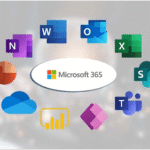Artificial Intelligence (AI) is no longer a distant concept confined to research labs; it has firmly established itself as the backbone of modern innovation. From personalized recommendations and autonomous vehicles to advanced healthcare diagnostics and generative AI applications, AI is reshaping the way industries operate and societies interact. The rapid adoption of AI is fueled not only by sophisticated algorithms but also by the underlying infrastructure that enables these technologies to perform at scale. In this context, the rise of bare metal as a service and AI cloud computing is proving transformative.
At its core, AI thrives on data and computational power. Training complex models, especially large language models (LLMs) or generative AI systems, requires enormous amounts of processing capability. Traditional virtualized cloud environments often struggle to meet these performance demands due to resource sharing and latency issues. This is where bare metal as a service becomes a game-changer. Unlike virtualized servers, bare metal provides dedicated physical hardware to users, ensuring maximum performance, low latency, and full control over the computing environment. AI workloads, particularly those involving GPU-intensive computations, benefit immensely from this setup. Enterprises can deploy models without worrying about the “noisy neighbor” effect, where other tenants on a shared server might slow down operations.
The appeal of bare metal extends beyond pure performance. Security-conscious organizations, especially in sectors like finance, healthcare, and defense, require stringent control over data and workloads. Bare metal environments allow businesses to manage their infrastructure with greater visibility, ensuring compliance with regulations and safeguarding sensitive information. For AI developers, this means the ability to experiment freely, scale efficiently, and deploy models in an environment optimized for performance without compromising security.
AI is also driving a shift in how enterprises approach cloud computing. Traditional cloud models, while flexible and scalable, often abstract away the hardware layer, limiting fine-grained optimization. The emergence of AI cloud computing platforms, which integrate specialized GPUs, high-speed interconnects, and low-latency networking, is bridging this gap. Organizations can now access cutting-edge AI infrastructure on-demand, whether for training massive models, running inference workloads, or developing AI-powered applications. By combining the flexibility of cloud deployment with the high performance of dedicated hardware, AI cloud computing is empowering enterprises to innovate faster and more efficiently than ever before.
One of the most significant implications of these advancements is democratization. Smaller startups and mid-sized companies, which previously struggled to access high-performance computing resources, can now leverage bare metal and AI cloud services to compete on a global stage. The barriers to entry in AI development are lowering, enabling a new wave of innovation across industries. Startups can rapidly prototype, train, and deploy AI models without the capital-intensive investment traditionally required for on-premises infrastructure. This trend is fueling a surge in AI-driven products, from intelligent chatbots and recommendation engines to predictive analytics platforms and automated content generation.
Moreover, the synergy between AI and high-performance infrastructure is accelerating breakthroughs in fields that rely heavily on computation. In scientific research, AI models are being used to simulate complex phenomena, accelerate drug discovery, and optimize energy usage. In finance, predictive models and algorithmic trading systems rely on rapid data processing and low-latency computing. Manufacturing and logistics benefit from AI-powered automation and real-time decision-making. Each of these applications demands infrastructure capable of handling massive data throughput and intensive computationsrequirements perfectly suited to bare metal and AI cloud solutions.
Sustainability is another important factor in the evolution of AI infrastructure. By leveraging optimized bare metal servers and modern AI cloud platforms, organizations can maximize efficiency, reduce idle cycles, and adopt more sustainable computing practices. Providers are investing in energy-efficient GPUs, advanced cooling systems, and renewable energy sources to support these high-demand workloads while minimizing environmental impact.
Looking ahead, the convergence of AI, bare metal as a service, and AI cloud computing is set to redefine technological innovation. Enterprises that embrace this infrastructure-centric approach can unlock unprecedented speed, flexibility, and scalability in their AI initiatives. They gain the ability to deploy powerful models without compromise, scale workloads seamlessly, and innovate at a pace previously unimaginable. For industries ranging from healthcare and finance to entertainment and logistics, these capabilities translate into tangible competitive advantagesimproved decision-making, enhanced customer experiences, and accelerated product development cycles.
In conclusion, the future of AI is inextricably linked to the evolution of computing infrastructure. Bare metal as a service provides the performance and control required for high-intensity workloads, while AI cloud computing delivers flexibility and accessibility for enterprises of all sizes. Together, they form a robust foundation for the next generation of AI innovations, democratizing access to advanced technology and enabling organizations to harness the full potential of artificial intelligence. As AI continues to reshape industries and drive economic growth, the strategic deployment of these technologies will determine which organizations lead the charge in the AI-powered future.






